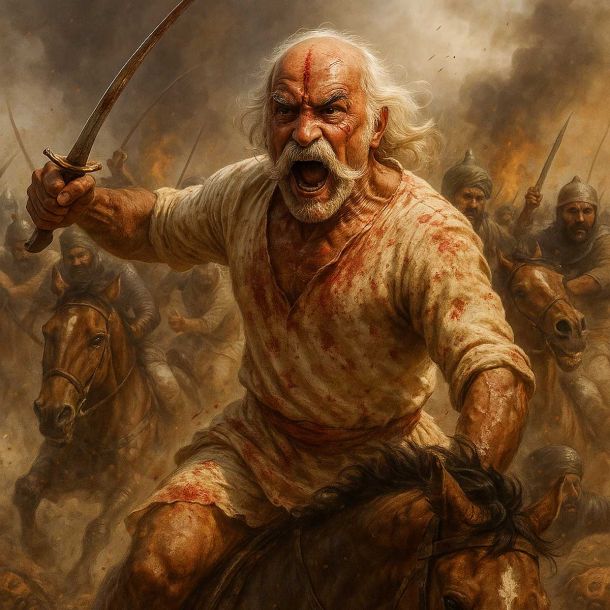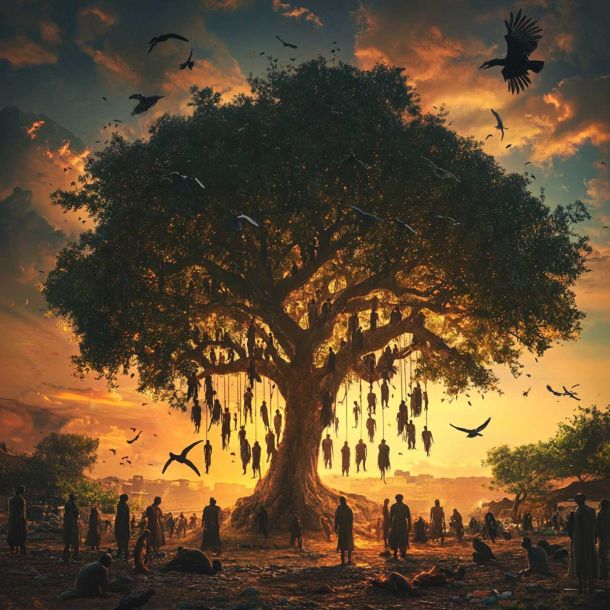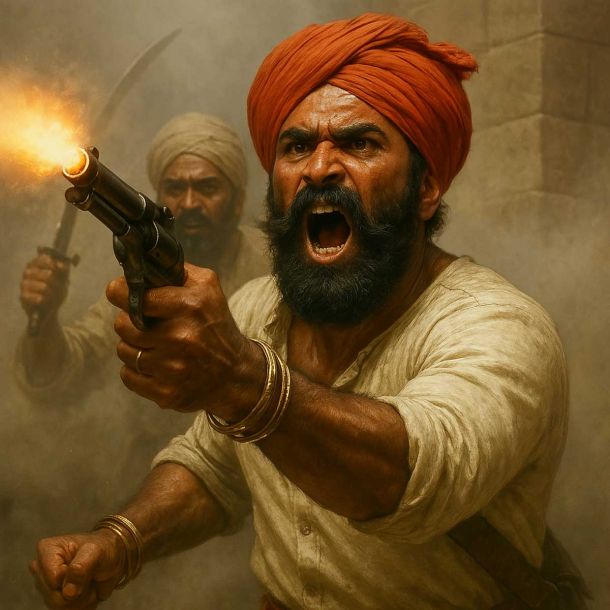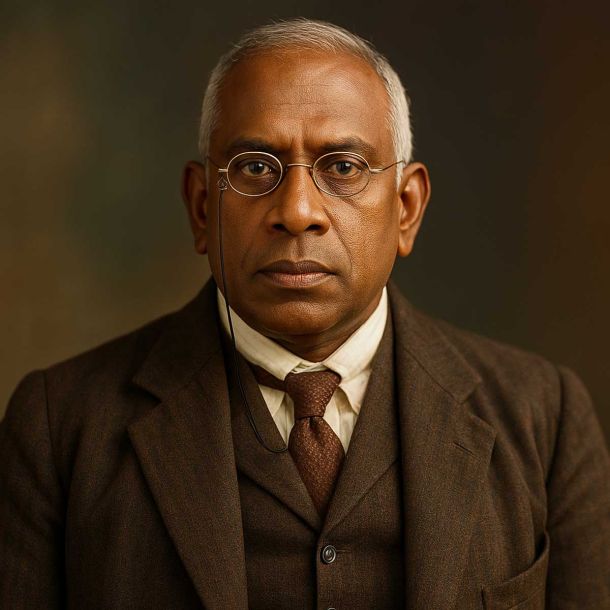MORE COVERAGE
A Strange New World - Road was clear for Indira Gandhi, nothing could stop her and there seemed no opposition to her regime, 'The New York Times' marvelled at how the JP movement had just melted away
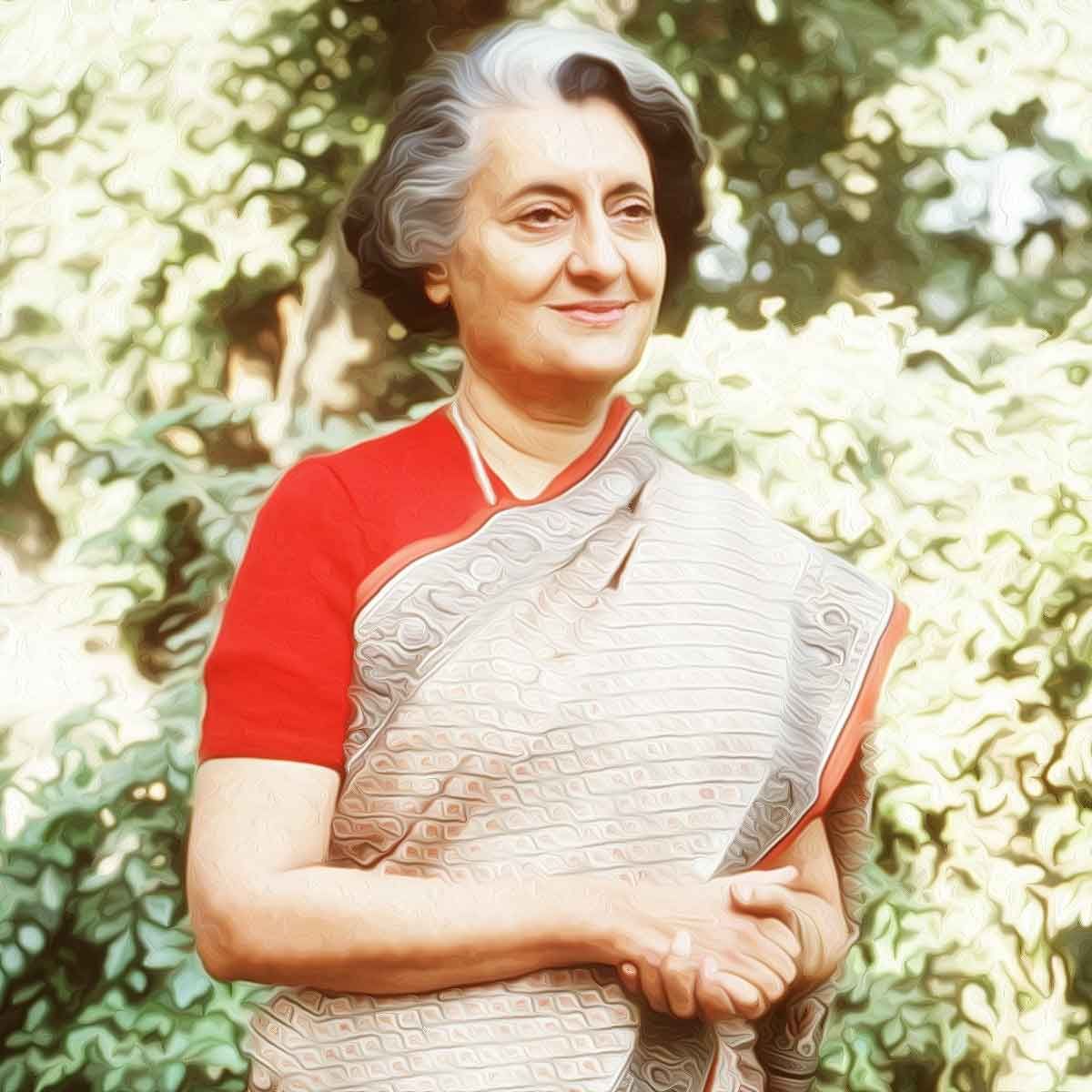
We were fast asleep when the phone rang in the early hours of 26 June 1975. Subramanian Swamy, was on the line, sounding very agitated as he informed that JP, KR Malkani, and other opposition leaders had been picked up by the police earlier in the night. He then went on to say that he had to leave his house in Greater Kailash before the police came to get him. My husband, Virendra Kapoor, a journalist working for the Financial Express, asked him to come straight away to 520 Vithalbhai Patel (VP) House.
While waiting for Swamy to arrive, Virendra walked across to the UNI news agency next door to find out more. Dawn had not yet broken, and he found the sub-editors busy handling reports about the countrywide arrests that were reaching the agency headquarters from its various correspondents and stringers. Exchanging notes agitatedly, they nonetheless put out news on the UNI wires about the shocking developments unfolding before them. Politicians from different parties, even Chandra Shekhar, a Young Turk of the Congress party, had been arrested by the police.
Swamy arrived shortly, he was restless and on edge, unable to hide his concern that the police might come and look for him. It was decided that the best hiding place would be Virendra’s college friend Suman Anand’s house, a decaying haveli in the nearby Gole Market. The Anands were a business family who dealt in automobile spare parts at Kashmere Gate. To our relief, the Anand family was warm and welcoming and provided Swamy with a room, although Swamy seemed a little put off by the common toilet at the end of the passage.
Shortly afterward, Manohar Lal, a colleague from the RSS–Jana Sangh– owned English daily Motherland, where Virendra and I both had worked earlier, came across to exchange notes about Malkani’s arrest and other momentous developments. By this time my professional instincts were awakened. I telephoned my chief reporter Abdul Rehman, asking if I could requisition the office van to visit the residences of the arrested leaders and speak to their families. Rehman, with his many years of experience, was cautious. He pointed
out that the Indian Express had not come out that morning because of a blackout the night before. He felt we should wait and watch the situation before rushing to do anything. Around 8 am on the radio—Indira Gandhi had just announced the imposition of an internal Emergency. Mrs. Gandhi explained that this had been done to save the country from a major conspiracy by the Opposition. Some elements, in the name of democracy, were bent on destroying democracy, she said, and they had to be stopped.
A family acquaintance from Bombay, whose husband, a former business executive, had come to Delhi to work in the Planning Commission, called up. She wanted to find out how I was doing since I was pregnant and due to deliver in a month. She had no clue about the night’s developments. After uttering an astonished ‘What! What!’ when I gave her a rundown, she put down the telephone abruptly. I never heard from her again. Her husband was in a senior government post and she must have obviously felt insecure. I soon discovered that this was not an uncommon response during the Emergency. People would hastily cross the road to avoid having to speak to me. The fact that my
brother-in-law Swamy was a member of the Jana Sangh and that both Virendra and I had at one time worked for the Motherland made us undesirable people to mix with. Kuldip Nayar, my editor at the Indian Express, Nihal Singh, editor-in-chief of the Statesman, and Soli Sorabjee, who fought many cases on behalf of MISA detainees, all recall similar experiences of being ostracized by friends. Most people wanted to play safe and were scared they would earn a black mark if seen associating with those known to be opposed to the Emergency.
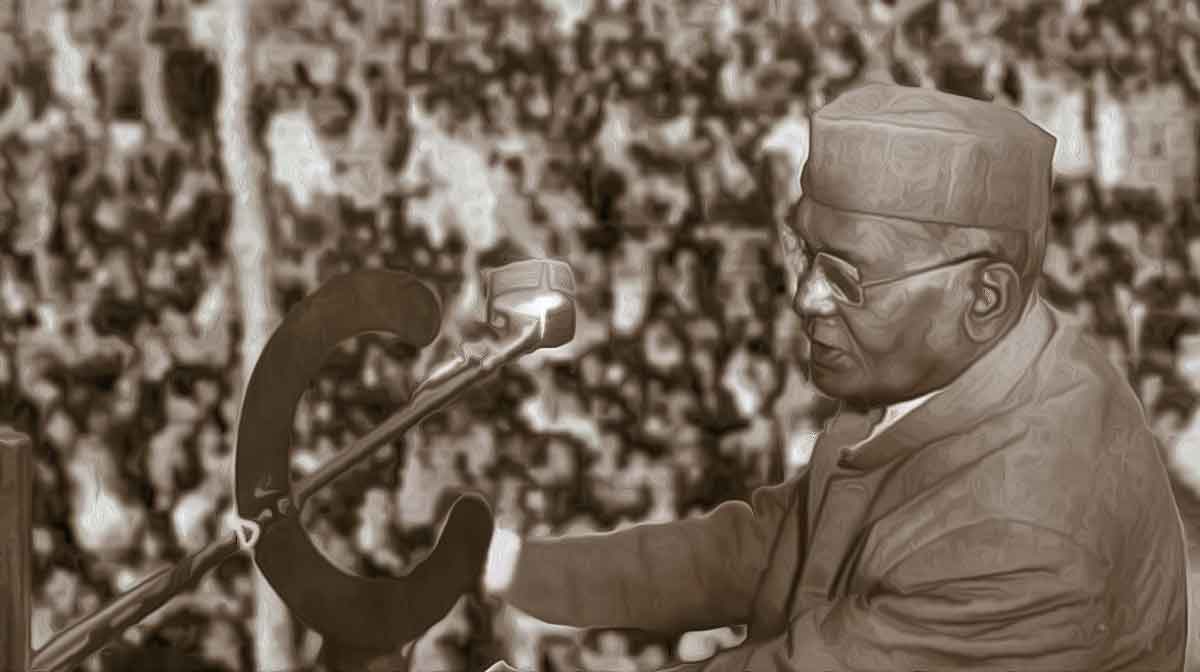 Jayaprakash Narayan addressing a rally during the Emergency period |
As the morning of 26 June dawned, Virendra did not seem able to stay still for a moment. Manohar and he left for the Indian Coffee House in the Theatre Communications Building on Janpath. The coffee house was a landmark meeting place where you could buy your periodicals, pick up your day’s supply of news and gossip over steaming cups of tea and coffee, and while away the time between press conferences and other reportorial assignments. It was a hub not just for journalists but people from all walks of life, including politicians, lawyers, trade unionists, artists, academics, and ordinary citizens who enjoyed political gupshup.
Not surprisingly, the coffee house would soon be demolished on the orders of Sanjay Gandhi. He felt this den of iniquity was the center of anti-Emergency propaganda/gossip and must be pulled down. But on 26 June, the coffee house was abuzz with all kinds of stories of what the government was up to. The entire crowd of curious people there surrounded Virendra who they thought, as a journalist, must know exactly what was happening. As was his wont, Virendra dispensed the latest news with great relish.
From the coffee house, Virendra thought it would be worthwhile finding out what was happening at the Motherland newspaper in Jhandewalan, which like most newspapers in the city was not on the stands that morning because of the power cut the night before. At 10.30 a.m. when Manohar and he reached the Motherland office, they found the electricity had been miraculously restored.
Although he had left the newspaper several months earlier and moved to the Financial Express, Virendra decided that Motherland should bring out a special edition. Since there were no senior journalists or editors around, he and Manohar compiled agency copies of the arrests from all over the country. Apart from giving the bare news, Virendra sat down to type out a commentary on the sensational events of 25–26 June. The bureau chief, Arvind Ghosh, arrived just as the two-page special supplement was being printed.
The special edition was made up largely of UNI ‘newsflashes’, giving names of arrested leaders and Mrs. Gandhi’s statement declaring an Emergency. Virendra’s semi-editorial declared that ‘a wave of shock and anger had gripped the Capital as Mrs. Gandhi went ahead with her plan like a copybook dictator’. He ended his vituperative piece by saying that Mrs. Gandhi’s gambit too would fail as had that of many dictators before her. Since he was no longer working with the Motherland, he used Manohar’s name when filing his piece, something Manohar was not too happy about—probably he sensed trouble, which Virendra at this stage did not.
Within an hour, the special edition of the Motherland was out on the streets. The hawkers selling it were besieged by the public and starved for authentic news. No one bothered about getting change, all they wanted was to snatch a copy before the edition was sold out. One man grabbed a pile of newspapers and handed over a fifty-rupee note to the hawker.
Virendra, armed with two dozen copies, decided to return to the coffee house. He drove Manohar’s scooter while asking him to clutch the pile of the special edition in his arms. Once at the coffee house, copies of the paper were passed from one hand to the next. By then the Hindustan Times’ Evening News edition had also come out, giving news of the arrests and the proclamation of an Emergency on the basis of news agency reports. But it was far more circumspect than the Motherland.
When I reached the Indian Express office in the forenoon, I was greeted by an unforgettable sight. The reclusive editor-in-chief S.M. Mulgaokar, who seldom ventured out of his ivory-towered office to mingle with us humble reporters and special correspondents—was sitting in the newsroom with a stunned expression, his hand on his forehead. The news editor Piloo sahib was handing him a series of news agency updates. The Express, too, was hoping to bring out a special edition on the startling news of the day, except that the electricity on Bahadur Shah Zafar Marg kept flickering on and off. By afternoon there was a newsflash from the agencies, declaring that censorship had been imposed and nothing could be printed without prior official clearance. By evening, the electricity supply to Bahadur Shah Zafar Marg was disconnected for the whole night so that the Times of India, Indian Express, Navbharat Times, Patriot, National Herald, Daily Pratap, and Veer Arjun could not bring out their editions. The newspapers would not be printed for another two days.
Anjali Pal, a freelance writer who used to write a column on the historic monuments of the city, offered to drive us around New Delhi in her battered Fiat. The only visible sign of the Emergency was the large presence of policemen outside government offices. Fresh barbed-wire fencing had been attached on the top of the brick walls of some official residences. For the rest, life seemed very normal. Mrs. Gandhi reportedly gloated, ‘There was not even a spark, leave aside a conflagration.’
By evening the police had arrived at the Motherland office to seal the building and also find out just who was responsible for the afternoon edition since the editor KR Malkani had been arrested earlier in the night. The chief reporter Ramesh Batura had destroyed all the copies of the typed reports so that blame could not be fixed on any single individual. The authorities decided to issue a MISA warrant against the assistant editor DN Singh who was next to Malkani in the newspaper’s hierarchy. Singh happened to be close to Chandra Shekhar, a fellow Thakur. After remaining elusive for several weeks, Singh eventually made use of all his political contacts to get his MISA warrant squashed. Singh pointed out that he was not at the office and had no knowledge of the special Emergency edition. Years later, he would confess to Virendra that for weeks he had suspected him of being a government agent who had provided the authorities an excuse for the sealing of the newspaper. After all, what business did he, an outsider, have to bring out a special edition of the paper? It was doubly suspicious that there was no warrant against Virendra. Little did anyone know that, as in any other totalitarian state, the left hand often does not know what the right is doing. The imposition of the Emergency would not make the unimaginative police and bureaucracy efficient overnight.
Kuldip Nayar, who acted as something of a mentor cum father confessor to the reporters, called us to his office for a pep talk. Even though we could not write about the goings-on in the city because of censorship laws, he suggested that we keep a diary, carefully recording all that was happening around us. It was invaluable advice but unfortunately, none of us followed it. Nayar also announced that we would meet the next day, on 29 June, at the Press Club of India to protest against the imposition of censorship and demand that the government lifts restrictions on the press.
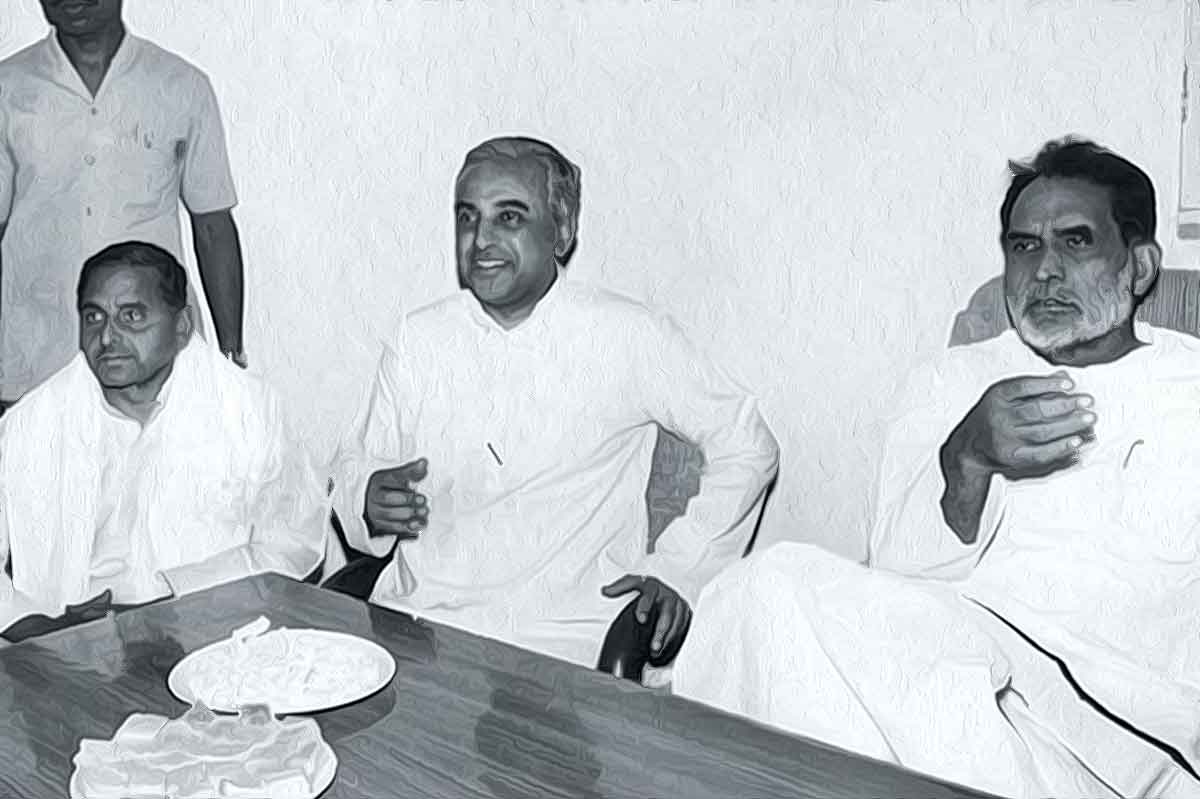 Subramanian Swamy with Chandrashekhar |
At the Press Club the following day one could sense a clear divide. On one side were the young reporters from the Indian Express, Statesman, and Hindustan Times, who were exercised by the turn of events and came forward enthusiastically to sign the petition that criticized press censorship and demanded the release of two arrested journalists, KR Malkani of the Motherland and Jagat Narain of the Hind Samachar, Jalandhar. On the other side were some cynical older journalists, mainly from the Times of India, who sat at
separate tables, not taking part in the proceedings but watching carefully from the sidelines. Some of them would report back to the authorities about the meeting. The letter of protest, which was signed by around 100 journalists, including Virendra and me, was dispatched to the President, the prime minister, and the minister for I and B. The list of the signatories was kept by Nayar himself and he refused to part with it even when the domineering information minister VC Shukla personally demanded that he hand it over to Mrs. Gandhi.
It took us many days to get accustomed to the strange new world in which we were now living. Not all were unhappy with the turn of events. Some claimed that the Opposition had indeed gone too far. Many genuinely believed that there was a sinister conspiracy that had been discovered in the nick of time. The country needed a bit of discipline too, they felt. The trains began to run on time, government officials were more responsive, and prices were coming under control. The government brought out a spate of slogans to try and sell the Emergency. There were big billboards with homilies like: ‘Discipline makes the nation great’, ‘Talk less, work more’, ‘She stood between order and chaos’, ‘Courage and clarity of vision, thy name is Indira Gandhi’.
Some even put up stickers on the back of their cars to make it clear which side they were on. Supporters of the Emergency chose to ignore the palpable sense of fear all around.
The newspapers informed us that Vinoba Bhave, Sarvodaya leader, and JP’s guru had given his stamp of approval to the Emergency. Since Vinoba was under a vow of silence, his views written on a piece of paper had been conveyed to one of his disciples, Nirmala Deshpande, who was close to Mrs. Gandhi. Vinoba had described the Emergency as an ‘era of discipline’ and the government had picked up the slogan for its propaganda purposes. Indeed, the word discipline was very much in vogue.
By 30 June an ordinance was passed amending MISA so that it was no longer necessary to disclose the reasons for arrest to the people taken into custody. The terror of being picked up by the police without any reason summed up the Emergency for us.
After arresting the top leaders, the police had started cracking down on the lower rungs of the dissidents, including student union activists, trade unionists, municipal corporators, and members of the Delhi Metropolitan Council affiliated with the opposition parties. On 4 July the government banned twenty-six organizations, including the RSS, the Anand Marg, the Jamaat-e-Islami, and the Naxalites. In our own office, BM Sinha, the respected deputy chief reporter, who happened to be an Anand Margi, was arrested.
Life got more complicated when the Jana Sangh central office secretary at VP House asked if we could temporarily store the office cyclostyling machine since the staff had got wind that all party offices in VP House were to be raided, and the expensive machines would get confiscated. A day later they were back asking if we would print copies of a message from Nanaji Deskhmukh to all RSS and Jana Sangh workers, giving instructions on how to conduct themselves during the Emergency. Courting arrest, staging satyagrahas, and educating the public were the crux of the message. Virendra, all afire to do something constructive to fight the Emergency, was only too willing.
As if printing proscribed leaflets for the Jana Sangh was not bad enough, Virendra through his friend Yogendra Rajpal, who was SP, New Delhi district, had got hold of the latest issues of TIME and Newsweek, which had carried cover stories on Indira’s Emergency. Both these issues had been promptly banned by the government. Virendra got the Jana Sangh office staff to make a stencil of the two cover stories, which were then printed by the grunting and heaving cyclostyling machine.
My tension continued even after the printing activity ended. Virendra was busy distributing copies of the magazine articles in the Indian Coffee House and at the Express office. Ajit Bhattacharjea, a known JP sympathizer, refused to accept the leaflet; others like Ashwini Sarin, a reporter at the Indian Express, returned asking for more copies the next day. Rajpal, with his police training, warned Virendra that while Bhattacharjea was probably on his side but did not want to show his hand, he should look with suspicion at anyone who wanted extra copies.
Some days later, my chief reporter Abdul Rehman took me aside with a worried expression. A friend of his in the local CID had received a complaint that I was printing subversive material in my house and was the sister-in-law of wanted absconder Subramanian Swamy. Rehman had assured the policeman that he could vouch for my credentials and he would stand guarantee that I was not mixed up with any anti-government group. The police officer, although he did not know me personally, was kind-hearted enough to make out a report exonerating me and declaring that I was not on good terms with my sister. My sister Roxna had been in and out of VP House during that time.
The anonymous complaint against me reported by Rehman had given me a jolt. It seemed that I could no longer trust anyone. There were very few who knew about the cyclostyle machine in my house. I now insisted that the Jana Sangh staff take their machine somewhere else.
At the Express office, there was very little work to do except type reports based on the official handouts issued by the government. We reporters felt it best to play safe as the Indian Express was already in hot water for having carried a blank space instead of an editorial, and some of the articles on the edit page were disguised as barbs against the Emergency. Even giving prominence to crime reports might have suggested that the law-and-order situation was not under control. Who knew what would upset the censors? It was safer to simply rehash government statements.
Indira Gandhi announced her Twenty Point Programme. The goals set included bringing down the prices of essential commodities, cutting down on government expenditure, declaring bonded labour illegal, setting up special squads for cracking down on conspicuous consumption, bringing in special legislation for the confiscation of smugglers’ properties, increasing power production, developing the handloom sector, and so on. It seemed like old wine in a new bottle: most of the programs were old hats and had been repackaged for propaganda purposes.
It was Sanjay Gandhi’s five-point program that came out shortly afterward which was more controversial. It focused on family planning, tree plantation, slum clearance, abolition of dowry, and eradication of illiteracy. Unlike the Twenty Point Programme, for which nothing very much was done, Sanjay demonstrated quite early that he took his pet projects seriously, especially family planning and slum clearance. He went about implementing his program like a bulldozer. His city beautification program was inspired by Jagmohan, the single-minded DDA vice-chairman who was obsessed with the need to clear the city of slums and unauthorized settlements. The maid working in my sister’s
house was one of the first victims. Her hutment was demolished and she had no option but to move to a faraway part of the city. As a result, she would turn up late for work every day. All over the city, unauthorized tenements were being removed. Another beautification measure made shop signboards uniform, with the lettering in the same typeface and colour. It gave a rather dull, regimented look to our erstwhile colourful Indian shopping centers.
Early on in the Emergency, traders and dealers were ordered to prominently display their price lists. Among the dozens of people jailed for not keeping proper price tags on goods were representatives of some of the leading business houses. The word was that Sanjay Gandhi wanted to teach the big companies a lesson and a heavy price was extracted for the release of the arrested men. Irfan Khan—a friend who after the folding of JP’s weekly Everyman’s had joined Hindustan Lever in Bombay in the PR department—flew down to Delhi.
He used his old police contacts, being a former journalist, to bail out a Lever staffer who had been arrested. Not everyone was so fortunate. Pandit Brothers, a very reputable shop in Connaught Place, owned by the family of P.N. Haksar, who had once been Indira Gandhi’s closest adviser, was raided and the owners arrested. Sanjay was known to be hostile towards Haksar. The infighting amongst the PM’s people was now public knowledge, with AIR broadcasting every hour the news of the raid on Pandit Brothers, who were the official stockists of Bombay Dyeing textiles.*
The newspapers began to carry lists of people who were once dubbed antiestablishment, but who had now turned over a new leaf and signed the Twenty Point and five-point programs. To endorse the programs was viewed as disassociating oneself from all opposition activity, and as a form of apology. Many of those who had gone underground because they were wanted by the police, or feared arrests, now made the rounds of newspaper offices with their statements, hoping their names would be published to establish that they had nothing to do with the Opposition. Prabhu Chawla, once an active member of the ABVP and a lecturer in a Delhi University college, got his name struck off the wanted list by swearing allegiance to Indira Gandhi’s and Sanjay’s programs. He pleaded with the Statesman campus reporter Neena Vyas to carry his statement so that he would not be harassed by the police. O.P. Jain, a municipal councillor of the Jana Sangh, also got the warrant against him quashed. His former tenant, Ayub Syed, editor of Current, intervened on his behalf with Sanjay Gandhi.
The police came in the middle of the night of 24 July to arrest Kuldip Nayar under MISA. It came as a rude jolt to all of us in the Indian Express. The fact that Nayar had organized the media protest against the Emergency at the Press Club was one of the many black marks against him. He had been warned by Shukla, whom he knew personally, against hobnobbing with foreign journalists. As a stringer for the Times, Nayar was in regular touch with their office in London, and Nayar’s article on Zulfikar Ali Bhutto was seen as a veiled allusion to the Emergency. After that, his weekly column was stopped since the newspaper received an order that all Nayar’s writings should be first submitted to the censors. A few days before his arrest Nayar had written a letter to Mrs. Gandhi, protesting against censorship and quoting Nehru’s words about the importance of a free press. He received a terse response from the PM’s media adviser, Sharada Prasad, stating that the very fact that for nine and a half years Mrs. Gandhi did not react to even the most vicious personal attacks on her showed the PM’s extraordinary tolerance of criticism.
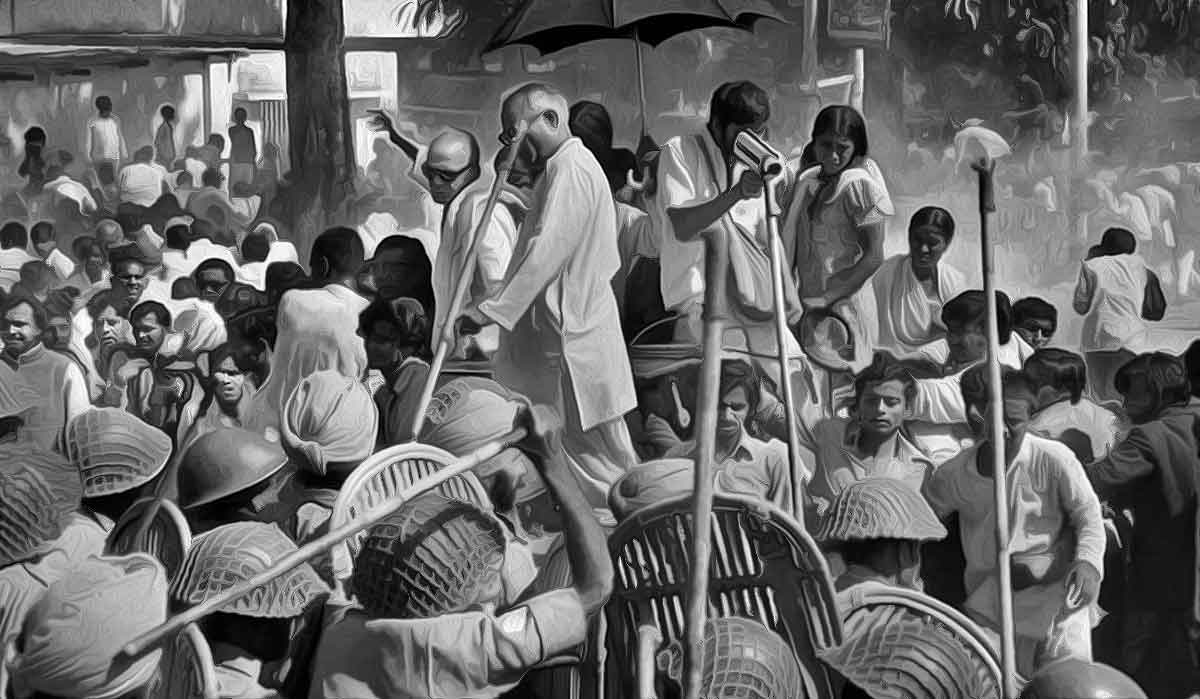 |
To add to our frustration there were plenty of people claiming they appreciated the benefits of the Emergency. Eulogies to Mrs. Gandhi came from all corners of the country. Eminent artist MF Husain portrayed her as the goddess Durga astride a tiger. I considered it the height of sycophancy, but then court painters in medieval times would no doubt have done the same. Husain’s series of paintings was taken on exhibition all around the country.
Mrs. Gandhi convened an emergency session of Parliament on 21 July to get the official stamp of approval for her proclamation of the Emergency. MPs from the treasury benches dutifully endorsed everything they were told to. There was not a murmur of dissent. To the left of the Speaker, there were a large number of empty spaces since the leading lights of the Opposition were mostly behind bars. The few still out of jail stood up to voice their protest.
Even before the Emergency Mrs. Gandhi had aired her views that government departments unnecessarily wasted time answering questions raised by MPs during Parliament’s Question Hour and providing ministerial responses to debates. She now decreed that only urgent and important government business should be transacted in a Parliament session. Question Hour, Calling Attention motions, and other parliamentary businesses initiated by private members were dispensed with.
Mrs. Gandhi asked Jagjivan Ram to do the honours and move the resolution seeking Parliament’s approval for the proclamation of the Emergency. Jagjivan Ram, minister for agriculture, revealed none of his inner anguish in his speech.
He squarely blamed the Opposition for creating a situation where there was a very real threat to democracy. A united front of four opposition parties had created an atmosphere of lawlessness in the country, particularly in Gujarat and Bihar where students and agitators had prevented elected members of the Legislative Assembly (MLAs) from carrying out their political duties, he said, adding that the railway strike had also sought to paralyze the government and force it to resign. In these circumstances, he argued, the government had no recourse but to proclaim an Emergency.
In Parliament, there were only a few stray voices of dissent. AK Gopalan of the CPI(M) charged that the sudden declaration was not because of a real threat to security but because of the Allahabad High Court judgment and the Janata Morcha victory against the Congress in Gujarat on that same day. Mohan Dharia, expelled from the Congress, declared that 26 June would be remembered as the blackest day in Indian democracy and the history of the country. Era Sezhiyan of the Dravida Munnetra Kazhagam (DMK) warned that the day was not far when all the citizens’ freedom would be in danger. The government’s motion was passed by 336 votes to 59 in the Lok Sabha. In the Rajya Sabha, Home Minister Brahmananda Reddy proposed the motion and it was approved by 136 votes to 33. The main opposition parties boycotted the House after the proclamation had been passed but the Communist Party of India (CPI), which voted with the government, and smaller parties like the Anna Dravida Munnetra Kazhagam (ADMK), the Republican Party of India (RPI) and the Muslim League continued to attend Parliament.
None of the details of the Opposition’s speeches were reported in the next day’s newspapers. The censors’ orders were that no report of the proceedings of Parliament could be published other than a report authorized by the Speaker of the House. We read the remarks of the few brave MPs who had defied the majority thanks to A.D. Gorwala’s tiny pamphlet Opinion which was sent to me by my mother from Bombay. Gorwala, whom I’ve mentioned before, was a retired government bureaucrat and a former colleague of my father’s. My mother had been posting me Gorwala’s publication for years, but I had never taken it very seriously until then. There was a big demand in the office for my copies of
Opinion. It was ironical that here we journalists were in the capital, next door to Parliament, but it was an old man sitting far away in Bombay who had the forethought and courage to purchase for two rupees the proscribed speeches from the Parliament Secretariat and reprint them.
The endorsement of the Emergency was complete, with Parliament passing an amendment which held that the imposition of Emergency by the President could not be challenged in the courts. The other task before Mrs. Gandhi was to ensure that her election petition would be upheld in the appeal to the Supreme Court. Mrs. Gandhi acted with extraordinary brazenness, leaving no stone unturned.
Parliament amended the Representation of the People Act (RPA) retrospectively so that the ruling of the Allahabad High Court judgment would be null and void. The amendments to the electoral law dealt specifically with issues raised in Mrs. Gandhi’s case, where she was on weak ground. Civil servants were no longer barred from assisting a candidate during a political campaign. Publication in the official gazette was conclusive proof of the date of resignation of a government servant.* For computing election expenses, the date of nomination was deemed to be the deciding date. Another amendment was that the case of every person disqualified based on corrupt election practices should be referred to the President who would be the final arbiter in consultation with the Election Commission.
As an extra precaution to ensure that her position was safeguarded, Law Minister Gokhale introduced the 39th Constitutional Amendment on 7 August which decreed that the election of the President, vice president, PM, and Speaker of the Lok Sabha would be outside the scrutiny of the court.
The legislation was passed with embarrassing haste, ignoring the minimum period required for circulating a bill. This was because the PM’s case was to be heard on 11 August in the Supreme Court. No one from the ruling party dissented from the spate of amendments. Another hastily passed Constitutional Amendment decreed that no criminal proceedings could be instituted in any court against any person who had been President, vice president, or PM. Shanti Bhushan, Raj Narain’s lawyer, protested in the Supreme Court, ‘The rules of the game are never changed till after the game is over.’ But Mrs. Gandhi was so single-minded about ensuring that no impediment should come in the way of her election appeal that even the upright P.N. Haksar was coerced to go to every judge to plead her case.2 There was little doubt about the outcome. The media was instructed that the court proceedings be censored.
The road was clear for Mrs. Gandhi. It seemed as if nothing could stop her and there seemed no visible signs of opposition to her regime. The New York Times marvelled at how the JP movement had just melted away. The Guardian, London, wrote, ‘The India’s State of Emergency is almost three months old now and rapidly becoming the mystery of the missing opposition.’ It lamented the absence of ‘angry voices’ against the Emergency. There were several satyagrahas and courting of arrest by groups of people, but the general public did not get to hear about them because of censorship.
We heard stories of the brutal methods employed by the police while clamping down on the students and teachers of Delhi University. Some fifty student leaders were rounded up on the day the university opened in July. JP’s Lok Sangharsh Samiti, which had been formed before the Emergency, declared a bandh on 25 July as a protest, and pamphlets were distributed. Nearly 200 people were arrested, including around 120 teachers. The entire Sanskrit department of Delhi University was sent to prison. Unbelievable acts of cruelty were carried out by the police of east Delhi on certain student activists who had taken part in underground activities. East Delhi had a particularly sadistic police officer in charge. We heard about these horror stories of torture through the underground grapevine.
Virendra was witness to one group of satyagrahis courting arrest on 2 October 1975, while he was on his way to the Embassy restaurant in Connaught Place for his regular coffee session. He saw a group of elderly farmers with BLD flags shouting slogans near the Ramble restaurant abutting what is now the underground Palika Bazaar in Connaught Place. It seemed that they had chosen to go to prison instead of the younger generation so that the able-bodied in the village could continue to work in the fields. Virendra saw Ajmer Singh, SHO of Parliament Street police station whom he knew from his days as a crime reporter, slapping a seventy-five-year-old man and stamping on the BLD flag.
He remonstrated with the policeman who then retreated. The policeman could have been more aggressive and arrested Virendra, but he knew that Virendra, as a crime reporter, was friendly with his boss, SP Yogendra Rajpal. When Virendra related the incident to Subramanian Swamy, Swamy cautioned restraint. ‘You are useful to the underground, you will unnecessarily become a marked man,’ he warned.
 |
Now it was the turn of events not in India but developments in neighbouring Bangladesh that cast a shadow over Mrs. Gandhi. President Sheikh Mujib-ur Rahman and almost his entire family were massacred by rebellious troops on 15 August. The youngest son, Russel, was just ten years old and he too was shot dead as he ran for shelter.
RN Kao, the trusted Kashmiri head of the agency for external intelligence, RAW, had earlier alerted Mrs. Gandhi that Mujib’s life was in danger and several plots were being hatched to assassinate him, some within the army itself.
She had sent Kao to Bangladesh to warn Mujib of the threat to his life. But Mujib had refused to believe that he could be eliminated by his own people. Indira Gandhi saw uncanny parallels between Bangladesh to her own situation. Mujib, like Mrs. Gandhi, had transformed from being a popular leader to an absolute dictator, scrapping the Constitution. Mrs. Gandhi now began to live in fear for the safety of herself and her family. She informed Pupul Jayakar that the assassination of Mujib was the first event in a plot that would engulf the
subcontinent. Mrs. Gandhi believed she was the next target. Her fears were fuelled by Kao who kept providing input that there was indeed a very real threat to her life.4
Although Mrs. Gandhi rarely appeared in public in this period, she could not avoid the annual address at Red Fort on 15 August, Independence Day, where she had to hoist the national flag. Every precaution was taken by the police to safeguard the route. Policemen were posted on rooftops and people in Daryaganj were ordered to keep the road-facing windows of their houses shut. She travelled in a closed car and delivered her speech from a heavily guarded enclosure on the ramparts of the Red Fort. Ironically, in her speech Mrs. Gandhi quoted her father, Jawaharlal Nehru: ‘Freedom is in peril, defend it with all your might.’ She claimed that extraordinary steps were necessary to put the country
back on the right road. Her voice sounded strained, her speech was rambling. The ghastly death of Mujib and his family clearly weighed heavily on her mind. Meanwhile, the Times, London, ran a full-page advertisement on 15 August protesting the Emergency, proclaiming, ‘Today is India’s Independence Day.
Don’t let the light go out on Indian Democracy.’ It was signed by 700 prominent world citizens, intellectuals, writers, artists, and MPs who had contributed towards the payment for the ad and signed the appeal. The signatories included:
Bishop Trevor Huddleston, Dame Peggy Ashcroft, Fenner Brockway, Glenda Jackson, A.J.P. Taylor, and Kenneth Tynan. The advertisement demanded the release of JP and other political prisoners and the restoration of democratic rights in India. It appealed to the conscience of the world to put pressure on India.
Mrs. Gandhi was hit at her most vulnerable spot. She prided herself on being Jawaharlal Nehru’s daughter. It was Nehru who had laid the foundation for an India that held true to democratic values and adhered to a Constitution that upheld every citizen’s fundamental rights. It was India’s democracy that set her apart in South Asia, where there were many dictatorships. Her close friend Dorothy Norman in the USA, once a regular correspondent, had stopped writing to her and had supported protest meetings abroad. Mrs. Gandhi tried to counter the ad by getting Chalapathi Rau, the editor of the Congress-owned National Herald, to draft a reply. But not many Indian intellectuals signed the statement.
Historian Romila Thapar who declined to sign had her income tax assessments for a decade reopened.7 Subramanian Swamy, who visited VP House often when he was in Delhi
(because by this time he was on the run and didn’t stay in one place for long), was full of stories from the underground about Mrs. Gandhi. It was claimed that after Mujib’s death Mrs. Gandhi was in a state of constant terror that she would be bumped off. According to one story, one day she discovered a picture of herself without a head in the window of her room. Although she screamed at her staff she was unable to find out who had put the picture there. Sanjay slept in the room next to hers and the door that connected her room to Sanjay’s through a tiny passage was kept open. She confided to Kao that if anything were to happen to her Sanjay was within call.8
There were also stories of Sanjay Gandhi’s growing influence over her. Washington Post correspondent Lewis Simons sent a dispatch asserting that she was terrified of her younger son. He quoted an unnamed source as claiming that Sanjay had slapped his mother six times at a dinner party in front of all the guests. Mrs. Gandhi did not react. Predictably, Simons was asked to leave the country. The story, although of doubtful authenticity, spread like wildfire through word of mouth.
References:
The Emergency - A Personal History - Coomi Kapoor
 Support Us
Support Us
Satyagraha was born from the heart of our land, with an undying aim to unveil the true essence of Bharat. It seeks to illuminate the hidden tales of our valiant freedom fighters and the rich chronicles that haven't yet sung their complete melody in the mainstream.
While platforms like NDTV and 'The Wire' effortlessly garner funds under the banner of safeguarding democracy, we at Satyagraha walk a different path. Our strength and resonance come from you. In this journey to weave a stronger Bharat, every little contribution amplifies our voice. Let's come together, contribute as you can, and champion the true spirit of our nation.
 |  |  |
| ICICI Bank of Satyaagrah | Razorpay Bank of Satyaagrah | PayPal Bank of Satyaagrah - For International Payments |
If all above doesn't work, then try the LINK below:
Please share the article on other platforms
DISCLAIMER: The author is solely responsible for the views expressed in this article. The author carries the responsibility for citing and/or licensing of images utilized within the text. The website also frequently uses non-commercial images for representational purposes only in line with the article. We are not responsible for the authenticity of such images. If some images have a copyright issue, we request the person/entity to contact us at This email address is being protected from spambots. You need JavaScript enabled to view it. and we will take the necessary actions to resolve the issue.
Related Articles
- Professor M. Shahid Alam, Northeastern University: The 101 Most Dangerous Academics in America
- Professor of Political Science at Columbia University, Professor Lisa Anderson regards America’s wars of liberation in Afghanistan and Iraq as “an assault on the entire region”: The 101 Most Dangerous Academics in America
- Professor of Feminist Studies at University of California, Bettina Aptheker describes her teaching philosophy as “revolutionary praxis”: one of her course syllabi describes lesbianism as the “highest stage of feminism”
- Asst. Professor of Comparative Literature at Columbia University, Gil Anidjar is an Anti-Israel activist, apologist for Islamic radicalism and identifies “good teaching” with pro-Palestinian activism: The 101 Most Dangerous Academics in America
- Professor Hamid Algar, University of California, Berkeley: The 101 Most Dangerous Academics in America
- Introduction - Understanding Islam through Hadis - Religious Faith or Fanaticism
- “No one wants to be easy to get over. That’s what mind games are for”: Prof Derrick Bell at New York University School of Law was godfather, of “Critical Race Theory,” an academic tradition in which race plays same role as a class in the Marxist paradigm
- "Hindus have a tendency to dip their foot in self-destructive behavior": Hindu elite shouts slogan of sarva-dharma- samabhãva whereas Muslim claims, "Allah has mandated lands of the infidels to his last prophet, in turn, has bequeathed them to the Ummah"
- “There is no greater agony than bearing an untold story inside you”: Premchand, a celebrated Hindi-Urdu writer was often claimed by leftists as representing their ideology, however, his story 'Jihad' suggests that he was, in fact, a true nationalist
- "Loafers of the world, unite!": Professor Stanley Aronowitz of City University of New York in his memoir “The Last Good Job in America” acknowledged that City University hired him as they believed he was a labor sociologist and admits it was just a scam
- "How can you tell when a political ideology has become the equivalent of a religion?": Associate Professor at Truman State University, Marc Becker is an organizer for Historians against the War with a long history of radicalism and antipathy toward the US
- The Emergency: JP recited Dinkar evocative poem, ‘Singhasan khaali karo, ke Janata Aati hai’, Harvard-returned Subramanian Swamy and member of Rajya Sabha presciently speculated, ‘What if Mrs. Gandhi introduced martial law’
- "Aum Mahadevaya Namaha - The Great Universal God": Sanatana Dharma forces human mind, time and time again, to accept the fact that Divine is all that exists, both clean and unclean, pure and impure, auspicious and inauspicious
- "If chicken and geese pass a resolution about peace, the wolf is not convinced": Hindus have to know that Christianity & Islam ain't religions but imperialist ideologies whose appetite has been whetted by running roughshod over a large part of the world
- "To win this war, we need a commander in chief, not a professor of law standing at the lectern": Prof. Barash is not a trained historian, economist, or sociologist but a psychologist, while his co-author Professor Webel is a philosopher, let's teach Hate
Related Articles
Twitter Coverage
Satyaagrah
Written on
Satyaagrah
Written on
Satyaagrah
Written on
Satyaagrah
Written on
Satyaagrah
Written on



